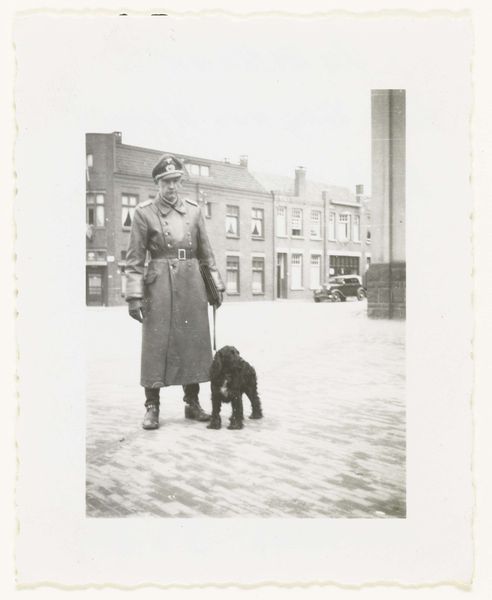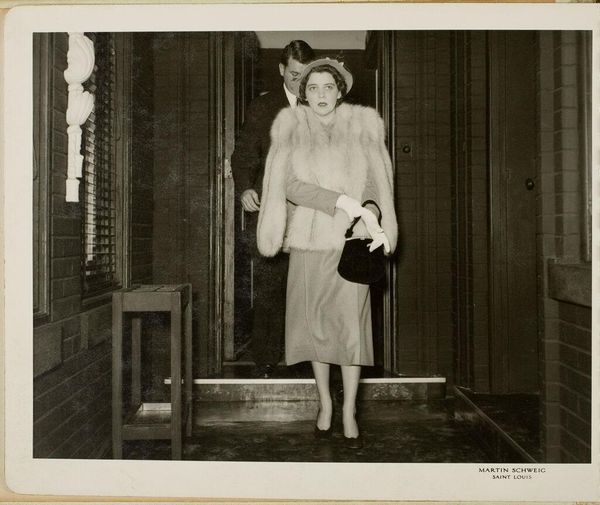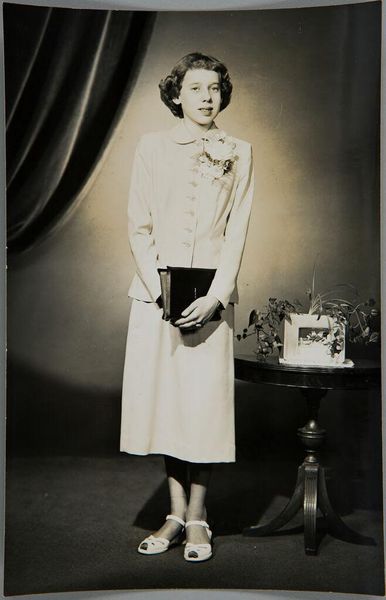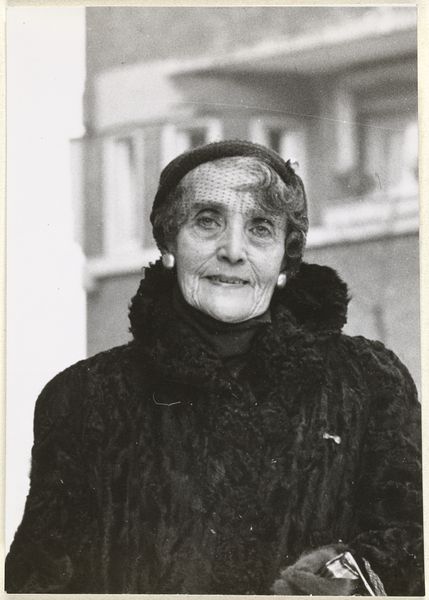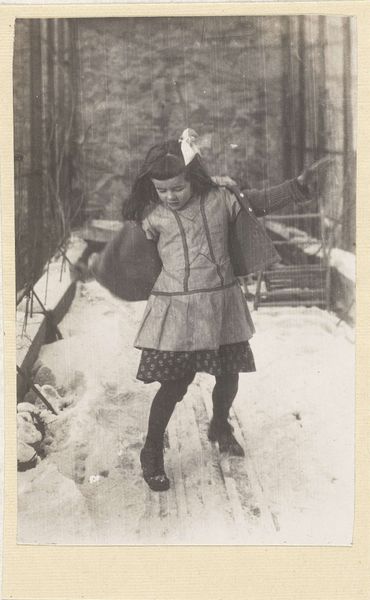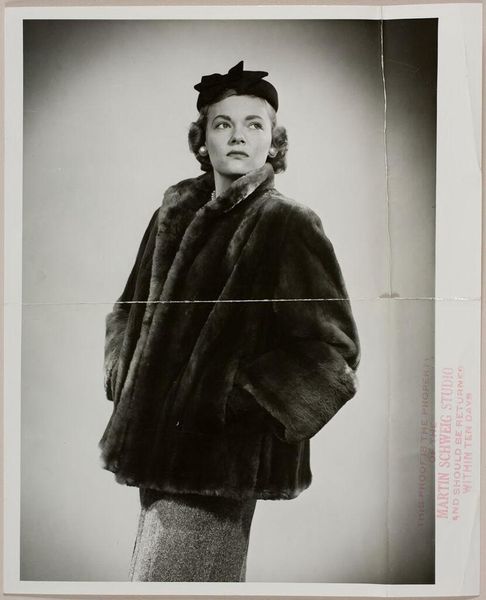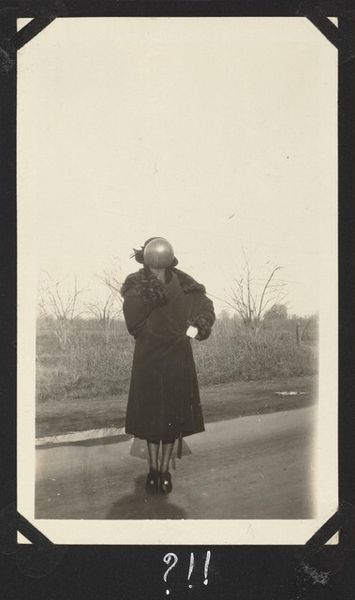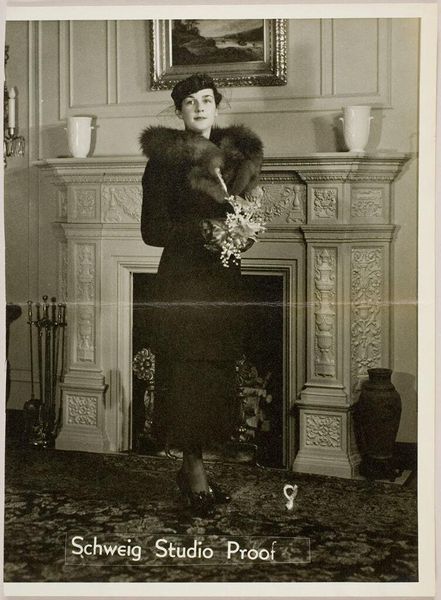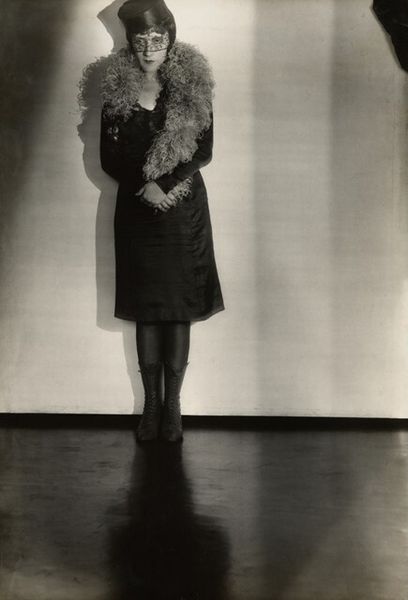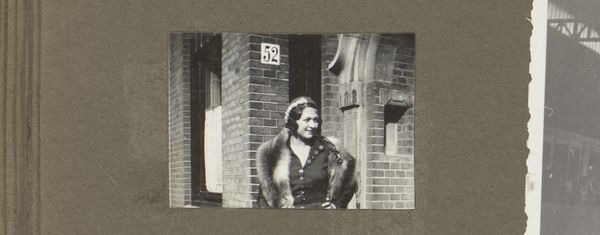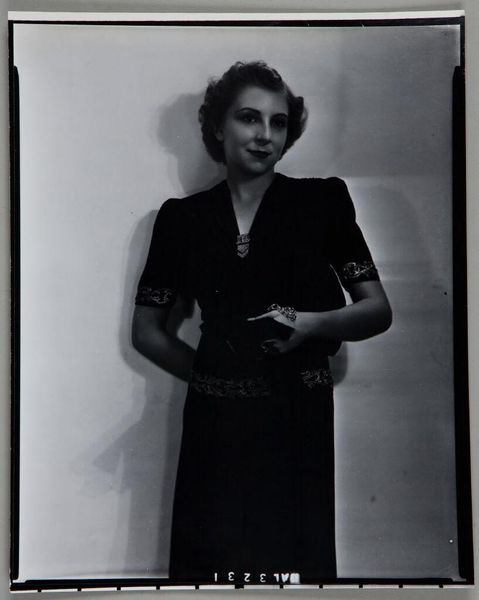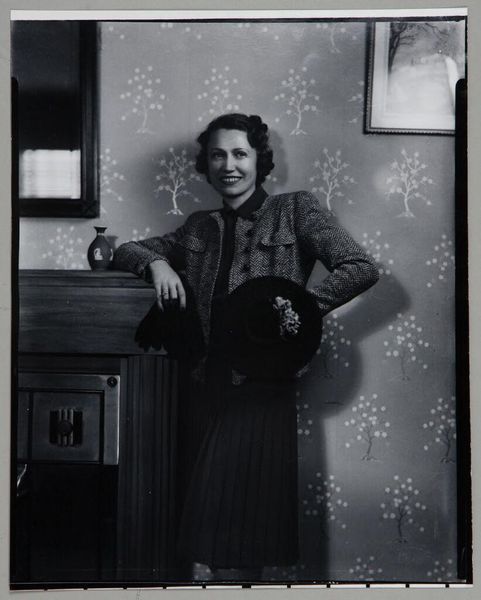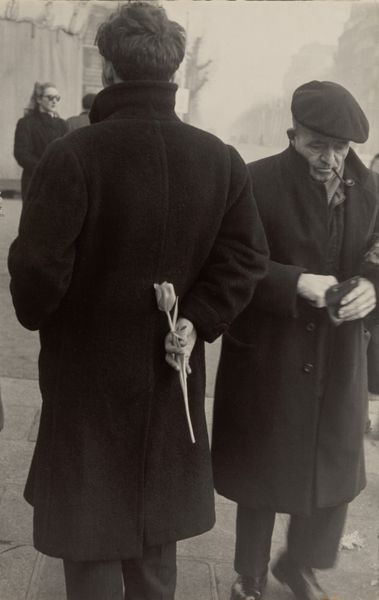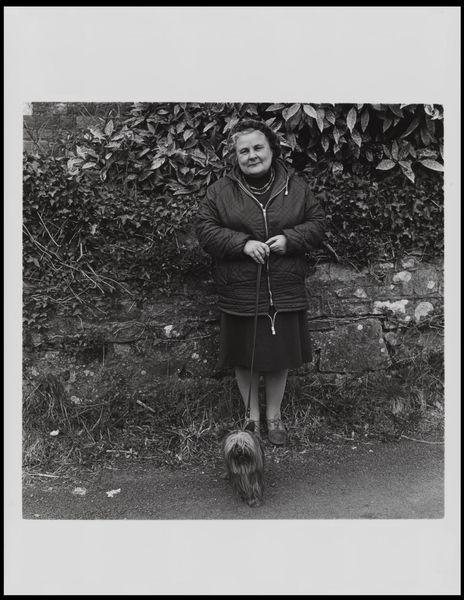
photography
#
portrait
#
street-photography
#
photography
#
realism
Dimensions: height 117 mm, width 90 mm
Copyright: Rijks Museum: Open Domain
Editor: Here we have "Else Mauhs in de sneeuw," a photograph taken sometime between 1900 and 1959, credited to the Algemeen Hollands Fotopersbureau and now at the Rijksmuseum. It strikes me as a very composed street portrait, but there's almost something…staged about it. What catches your eye about this piece? Curator: It's fascinating to consider the layers of labor involved. The fur coat, clearly signaling status and access to materials. Who trapped the animals, processed the pelts, and crafted the garment? What was the photographer's relationship to this individual, to have them pose in this manner? Consider also the labor of daily life, signaled by this moment and her winter dress: walking along a snowy street and enduring. Editor: That’s interesting - the focus on the material process rather than the sitter. The tag "realism" made me think we were looking at a captured moment. Curator: "Realism" in photography is a fascinating label precisely because it belies the artificiality. We can analyse what its presence signifies. Is the composition spontaneous, or carefully arranged? What does it mean to present her in this manufactured ‘real’ moment, almost performing wealth? Also, look closely: consider the mass production and material costs of the woman's boots or purse compared to her coat. Editor: So you’re suggesting it is about consumption, and not so much documentation? Curator: Precisely! Photography itself, in the mid-20th century, became more accessible as a consumer good. That availability shifts the social meaning, and what it meant to "capture" an image of daily life. The availability is a statement within itself, and therefore we need to analyse and view the image within its complex web of creation. Editor: This makes me think differently about street photography and how labor, accessibility, and intent can all impact how we read it. Curator: Indeed. It challenges our assumptions about the genre and opens up a richer understanding of its social implications.
Comments
No comments
Be the first to comment and join the conversation on the ultimate creative platform.
